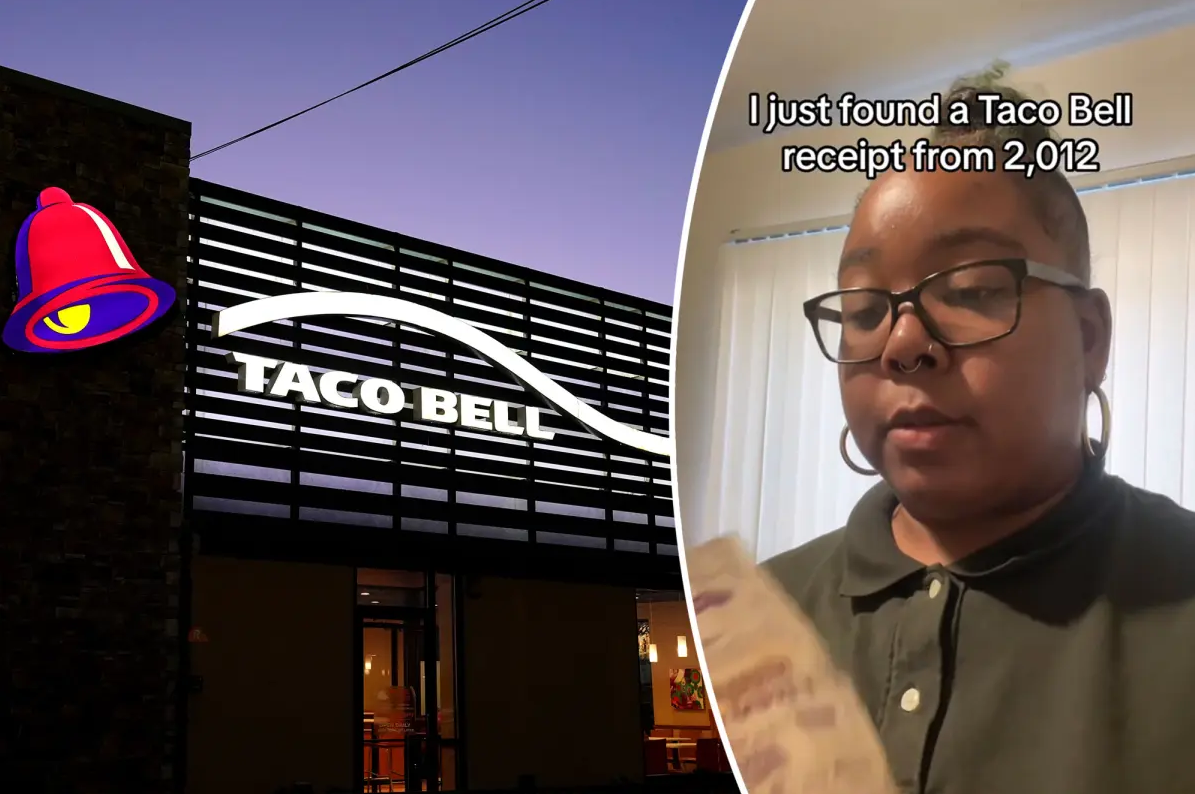In recent times, Taco Bell enthusiasts have found themselves grappling with a harsh reality… the once-affordable fast food haven is no longer as budget friendly as it used to be. A TikTok revelation by an aspiring rapper, LovelyOcean, brought this issue to the forefront, as she shared a faded 2012 receipt reflecting the stark difference in prices. What was once a mere $2.59 for two beefy five layer burritos has now escalated to $3.59 for just one of these beloved gut bombs.
The online response was swift and widespread, with thousands joining in to express their dismay over the escalating prices. One disheartened customer lamented, “This is gonna make me cry,” while another shared a recent disappointing experience of smaller and colder burritos at higher prices, turning comfort food into a source of sadness.
Even Taco Bell employees chimed in, acknowledging the frustration. One employee revealed, “As someone who works at Taco Bell, I think the prices are crazy. Someone got ten items for almost 60 dollars, and they were the cheaper options.”
The sentiment echoed in the comments highlighted a common theme Taco Bell was once the go to place for affordable meals, especially for those with growing appetites in tow. However, rising prices have made it challenging for loyal patrons to indulge in their favorite guilty pleasure without breaking the bank.
Interestingly, geographical location appears to play a role in the varying costs of Taco Bell meals. A study by NetCredit revealed that Delaware residents consistently paid the least for their Taco Bell trips, with prices 10.41% below the national average. On the flip side, Alaskans faced the highest costs, paying 16.40% above the median.
Despite the outcry and viral complaints, Taco Bell’s financial standing seems unscathed. According to Nation’s Restaurant News, Taco Bell not only weathered the storm of rising prices but also shattered growth and sales records, leaving parent company Yum Brands optimistic about the future.
As we navigate these challenging times of inflation and economic pressures, the question on everyone’s mind remains: when will this cycle of price hikes come to an end? With wages also increasing (not nearly as much as prices imo), there’s a hope that a balance will be struck, making fast food indulgences more accessible once again.
In conclusion, the nostalgia of a faded 2012 receipt serves as a poignant reminder of the evolving landscape of fast food prices. Taco Bell’s journey from an affordable favorite to a pricier option sparks reflections on the broader economic challenges. Only time will tell if the trend persists or if a return to more reasonable prices is on the horizon.

